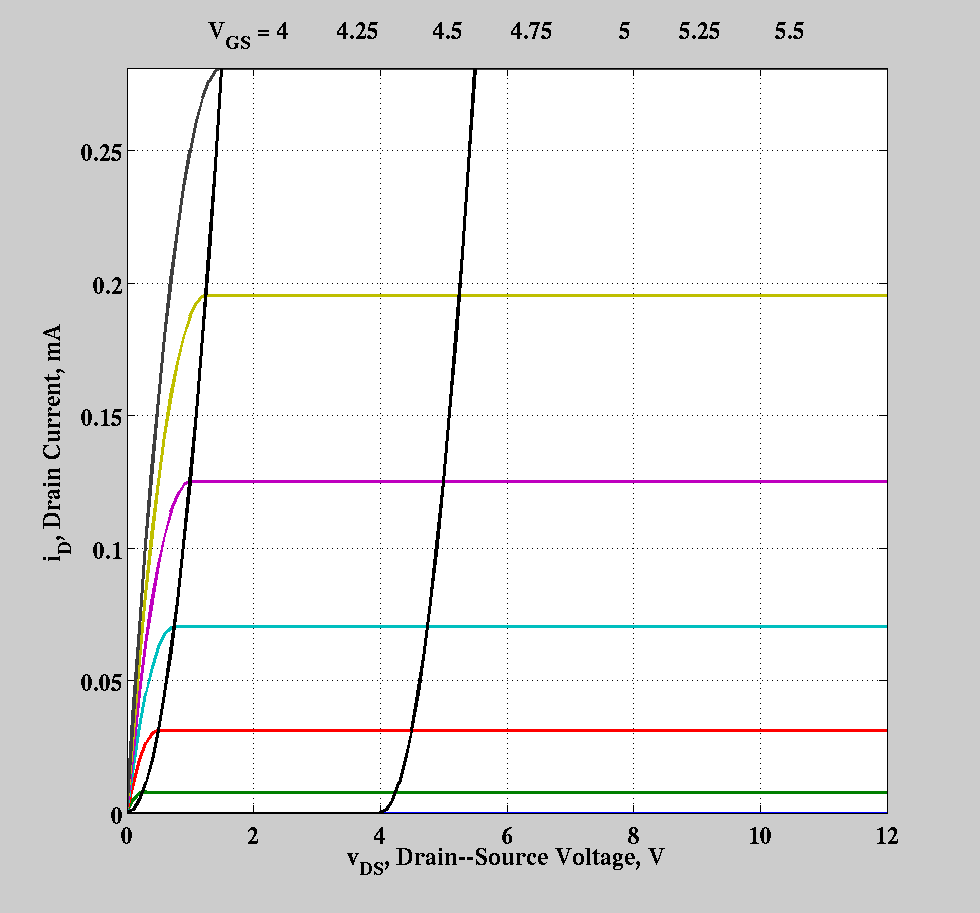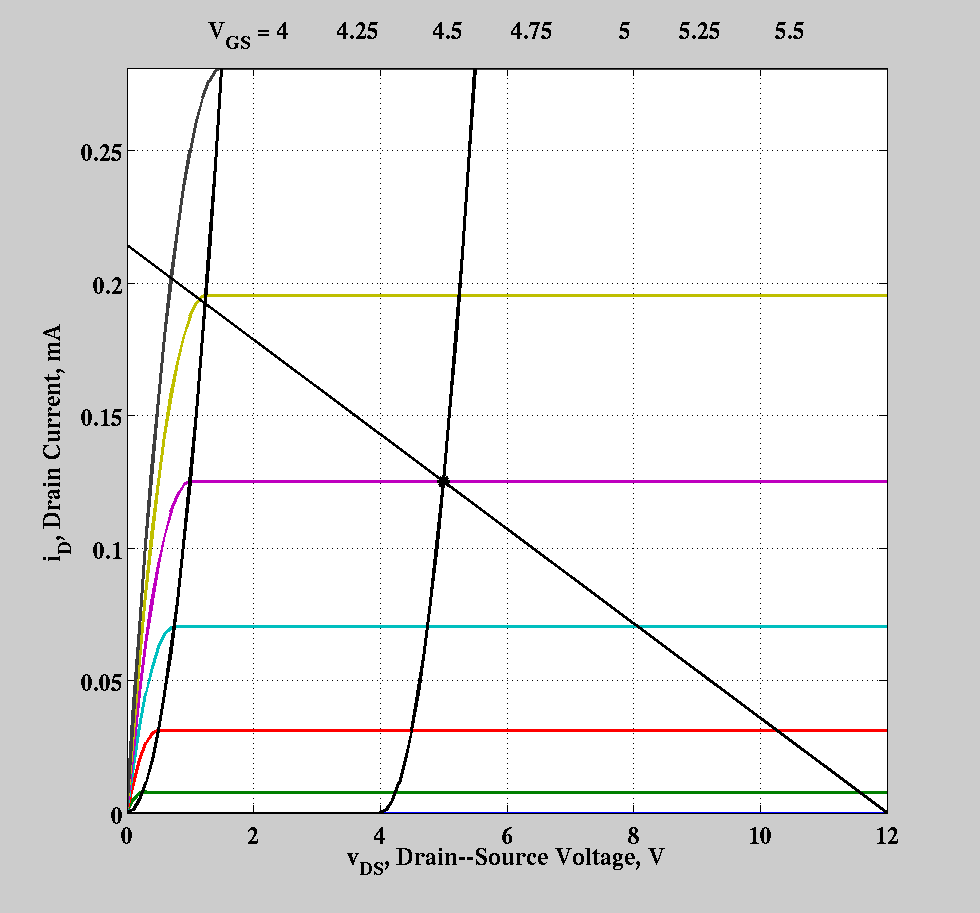Contents
idtarget=125e-6;
vddtarget=12;
Transistor parameters
kp=50e-6;w=10e-6;l=2e-6;vt0=4;
vdaxis=0:0.1:vddtarget;
vgaxis=[0:0.25:1.5]+vt0;
[vd,vg]=meshgrid(vdaxis,vgaxis);
const=kp*w/l
const =
2.5000e-04
Current calculation
idsat=const*(vg-vt0).^2/2;
idtriode=const*((vg-vt0).*vd-vd.^2/2);
idboundary=const*vd.^2/2;
id=idtriode.*(idtriode>=idboundary)+idsat.*(idsat<idboundary);
We set vg to vd, so we can plot id against vd
idshortgd=const*(vd-vt0).^2/2.*(vd>=vt0);
Plot the transistor curves
figure;plot(vdaxis,id*1e3);hold on;
plot(vdaxis,idboundary*1e3,'k');
plot(vdaxis,idshortgd*1e3,'k');grid on;
hold off;
title(['V_{GS} = ',num2str(vgaxis)]);
xlabel('v_{DS}, Drain--Source Voltage, V');
ylabel('i_{D}, Drain Current, mA');
axis([0,max(vdaxis),0,max(max(id))*1e3]);

Find the Q point for the target current
vgQ=vt0+sqrt(2*idtarget/const)
vgQ =
5
Try to find a resistor
vdQ=vgQ;
r=(vddtarget-vdQ)/idtarget
r =
56000
Plot everyting
figure;plot(vdaxis,id*1e3);hold on;
plot(vdaxis,idboundary*1e3,'k');
plot(vdaxis,idshortgd*1e3,'k');
plot(vdQ,idtarget*1e3,'k*');
plot([0,vddtarget],[vddtarget/r,0]*1e3,'k');grid on;
hold off;
title(['V_{GS} = ',num2str(vgaxis)]);
xlabel('v_{DS}, Drain--Source Voltage, V');
ylabel('i_{D}, Drain Current, mA');
axis([0,max(vdaxis),0,max(max(id))*1e3]);


